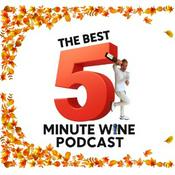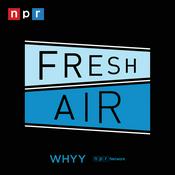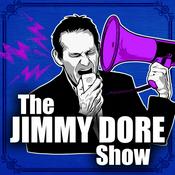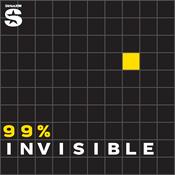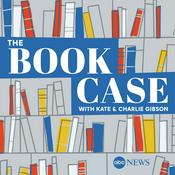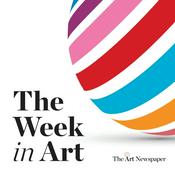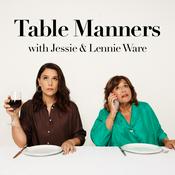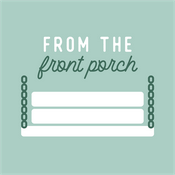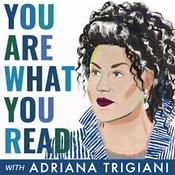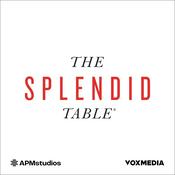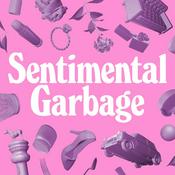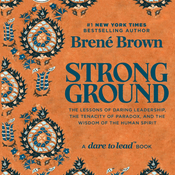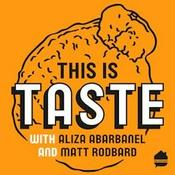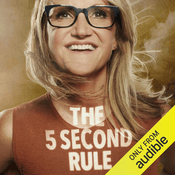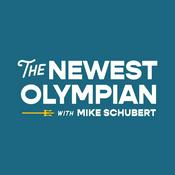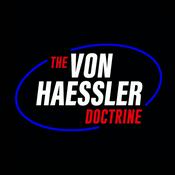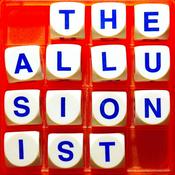46 episodes

#45 Aleksandr Gampel: Reinventing Homebuilding with Mobile Micro-Factories and Cuby Technologies
9/11/2025 | 55 mins.
What if the future of affordable housing doesn’t come from prefab or 3D printing, but from building vertically integrated factories that travel to where homes are needed most?In this episode, I sit down with Aleksandr Gampel, co-founder and COO of Cuby Technologies, to talk about their radical approach: Mobile Micro-Factories. Instead of shipping oversized boxes across the country, they bring a full factory on-site – producing windows, panels, framing, and even helical piers locally, then assembling homes with unskilled labor.We get into why housing costs have exploded (up 40–50% since pre-COVID), how Cuby’s system cuts hard costs by reducing skilled labor, and why most prefab and modular ventures have failed. Aleks explains how their vertically integrated model works, why they’re targeting small-to-mid-sized builders instead of one-off homeowners, and what it will mean when dozens, or even hundreds, of mobile microfactories are running across the U.S.We also dive into design: steel tube framing, magnetic facades, and the surprisingly elegant logic behind Toyota’s production system applied to housing. If you’ve ever wondered how we might actually build cost-effective, durable homes at scale – without sacrificing beauty or quality – this episode is worth your time.CHAPTERS:00:00 Introduction to Housing Challenges02:53 The Concept of Mobile Micro Factories05:35 Manufacturing Process and Product Offerings08:24 Building Systems and Structural Integrity11:17 Cost Management and Market Strategy14:05 Design Flexibility and Market Demand17:07 Community Development and Housing Affordability19:53 Operational Dynamics of Mobile Micro Factories24:43 Building Efficient Factories with Unskilled Labor27:30 The Role of Automation in Construction28:54 Phased Business Plan for Housing Production30:34 Funding and Capital Efficiency in Startups32:33 Design Versatility and Limitations in Home Building34:10 Long-Term Vision and Growth Strategy35:15 Innovative Problem Solving in Construction39:13 Challenges of Prefabrication in the Housing Market41:33 Material Science Innovations for Housing43:11 The Journey of Co-Founding a Startup44:33 Connecting with Cuby TechnologiesCONNECT WITH ALEKSANDR GAMPELLinkedIn: https://www.linkedin.com/in/iamaleksandrgampel/ Twitter/X: https://x.com/agampel1 Cuby Technologies: https://www.cubytechnologies.com/ CONNECT WITH AUSTIN TUNNELLNewsletter: https://playbook.buildingculture.com/ https://www.instagram.com/austintunnell/ https://www.linkedin.com/in/austin-tunnell-2a41894a/ https://twitter.com/AustinTunnellCONNECT WITH BUILDING CULTUREhttps://www.buildingculture.com/ https://www.instagram.com/buildingculture/ https://twitter.com/build_culture https://www.facebook.com/BuildCulture/ SPONSORSThank you so much to the sponsors of The Building Culture Podcast!Sierra Pacific Windows: https://www.sierrapacificwindows.com/ One Source Windows: https://onesourcewindows.com/

#44 Ann Sussman and Kelsey Bradley: Cognitive Architecture – Stone Age Brains In A Modern World: What Neuroscience Can Teach Us About Making Places People Love
6/26/2025 | 1h 4 mins.
What if the key to designing better cities wasn’t just in concrete, code, or cost, but in understanding how our brains actually work?In this episode, I talk with Ann Sussman and Kelsey Bradley of the Human Architecture and Planning Institute (HAPI) about a subject that’s as profound as it is underdiscussed: how our unconscious biology reacts to the built environment – and how that should change everything about how we design.Ann, architect and author of Cognitive Architecture and Kelsey, founder of Design Cause Inc., now Executive Director at HAPI, walk us through the neuroscience of placemaking. We talk eye tracking. Skin conductivity. Heart rate variability. And how our “Stone Age brains” are still calibrated for the Savannah, even when we’re stuck in a strip mall.This episode will validate what many of us feel but can’t quite explain why some places energize us, and others quietly drain us. The answers aren’t just aesthetic. They’re evolutionary.CHAPTERS:00:00 The Car-Free City: Oslo's Urban Transformation03:43 Human Architecture: Merging Biology and Design08:03 Understanding Human Experience: The Emotional Brain11:24 The Impact of Environment on Human Behavior18:37 The Influence of Modernism on Architecture23:28 The Threatening Nature of Suburban Design26:47 Measuring Human Responses: Biometrics in Architecture31:25 The Science of Emotions in Design33:52 The Power of Empathy in Leadership36:57 Designing for Human Flourishing40:07 The Impact of Built Environments on Mental Health45:35 Understanding Human Perception in Urban Design49:13 The Need for Beautiful and Functional Spaces53:00 The Future of Urban Planning and Community Well-beingMENTIONED RESOURCESBook: Cognitive Architecture: Designing for how we respond to the built environmentBook: Urban Experience & Designhttps://thehapi.org/Free course on "The Genetics of Design" – HAPI.org Courses Design Cause Inc. – Kelsey’s nonprofit building schools in AfricaCONNECT WITH ANN SUSSMANLinkedIn: https://www.linkedin.com/in/ann-sussman-a1a34a14/X: https://www.linkedin.com/in/ann-sussman-a1a34a14/ Ann’s Blog: https://annsussman.com/ The Genetics of Design: https://geneticsofdesign.com/about CONNECT WITH KELSEY BRADLEYLinkedIn: https://www.linkedin.com/in/kelseybradley/Instagram: https://www.instagram.com/kelseydeebradley/ CONNECT WITH AUSTIN TUNNELLNewsletter: https://playbook.buildingculture.com/ https://www.instagram.com/austintunnell/ https://www.linkedin.com/in/austin-tunnell-2a41894a/ https://twitter.com/AustinTunnellCONNECT WITH BUILDING CULTUREhttps://www.buildingculture.com/ https://www.instagram.com/buildingculture/ https://twitter.com/build_culture https://www.facebook.com/BuildCulture/ SPONSORSThank you so much to the sponsors of The Building Culture Podcast!Sierra Pacific Windows: https://www.sierrapacificwindows.com/ One Source Windows: https://onesourcewindows.com/

#43 Isaac French: You Can Just Do Things – How a First-Time Developer Built One Of The Most Beloved Retreat Brands In The Country
6/12/2025 | 1h 10 mins.
In this episode, I talk with Isaac French, founder of Live Oak Lake and one of the most thoughtful voices I’ve come across in the world of experiential real estate. Isaac’s story reads like an adventure novel: raised with eight siblings on a Texas farm, homeschooled, steeped in grit. Well before turning 30, he walked five acres of tangled brush – no money, just a vision – and figured out how to design and build a seven-cabin, Nordic-inspired retreat that went viral, grossed over $1M in bookings, and sold for $7M. All in under two years. And plenty went wrong along the way.He’s basically a case study in the idea: you can just do things.We talk about how Isaac blends hardware – design, layout, light – with software – hospitality, scent, story – to create spaces that are both deeply personal and universally resonant. He shares how a glitch in the Airbnb matrix led him to build a direct-to-consumer brand from scratch, and how beauty often begins by submitting to constraint, whether it’s the land, the budget, or your own limits.If you’ve ever wondered what it would mean to build with your soul, not just your spreadsheet, this one’s for you.CHAPTERS:00:00 Creating Community Through Built Environments03:48 The Journey of Live Oak Lake17:54 The Art of Hospitality and Experience27:40 Exploring New Urbanism and Placemaking36:54 The Power of Saying No39:02 Exploring Sacred Geometry and Beauty44:16 Biophilic Design and Human Connection49:45 The Role of Humans in Environmental Stewardship54:43 Navigating Success and Humility01:00:19 Future Visions and Community BuildingMENTIONED RESOURCES:Live Oak Lake | Modern Cabins in Waco, TexasCONNECT WITH ISAAC FRENCHEmail: [email protected]: https://www.isaacjfrench.com/ Twitter: https://x.com/isaacfrench_Instagram: https://www.instagram.com/isaacfrench_LinkedIn:https://www.linkedin.com/in/isaacjfrench/Youtube:https://www.youtube.com/c/IsaacFrench CONNECT WITH AUSTIN TUNNELLNewsletter: https://playbook.buildingculture.com/ https://www.instagram.com/austintunnell/ https://www.linkedin.com/in/austin-tunnell-2a41894a/ https://twitter.com/AustinTunnellCONNECT WITH BUILDING CULTUREhttps://www.buildingculture.com/ https://www.instagram.com/buildingculture/ https://twitter.com/build_culture https://www.facebook.com/BuildCulture/ SPONSORSThank you so much to the sponsors of The Building Culture Podcast!Sierra Pacific Windows: https://www.sierrapacificwindows.com/ One Source Windows: https://onesourcewindows.com/

#42 Charles Duff: North Atlantic Cities - The Forgotten Blueprint for the Future
5/29/2025 | 1h 8 mins.
New episode out now with Charles Duff, author of The North Atlantic Cities. This is one I’ve wanted to record for years, ever since I read his book. Charles lays out a vision of city building that’s neither skyscraper-packed Manhattan nor endless suburban sprawl, but something in between. Something tested, timeless, and deeply human.We talk about what makes cities like Amsterdam, London, and Boston so livable-and why they offer a roadmap for places like Oklahoma City and the Sunbelt. It’s not about replicating Parisian density or banning cars. It’s about building places where families can live in row houses, walk to a corner store, catch a train, and still have a backyard, space and privacy. It’s about recognizing that the built environment is one of our biggest levers for addressing the environment, culture, economics, and quality of life–all at once.Charles explains how a bunch of brick houses built by 17th-century merchants ended up creating one of the most resilient, beautiful, and efficient urban forms the world has ever seen. And he makes a compelling case that we don’t need to invent a new future, we just need to remember what already works.This one’s for anyone who cares about the intersection of beauty, density, and sanity in our cities. Hope you enjoy it–and if you do, go read the book. It’s changed the way I think about building.CHAPTERS:00:00 The Hidden Way of Building Cities05:08 Understanding North Atlantic Cities12:27 The Importance of Urban Density21:01 The North Atlantic Way of Building26:10 Lessons from North Atlantic Cities36:11 Living Conditions in 1600s Europe39:42 The Rise of the Dutch Middle Class43:35 Architectural Innovations in the Netherlands46:27 Contrasting Urban Developments: Paris vs. London48:50 The Modern Row House and Urban Density55:52 The Importance of Aesthetic in Urban Design01:01:46 Integrating Density with Community Needs01:05:45 Final Thoughts on Urban DevelopmentMENTIONED RESOURCES:Charles’ book- The North Atlantic Cities: https://lute-grasshopper-4hhr.squarespace.com/ CONNECT WITH CHARLES DUFFLinkedIn: https://www.linkedin.com/in/charles-duff-8a2486237/ Website: https://lute-grasshopper-4hhr.squarespace.com/ CONNECT WITH AUSTIN TUNNELLNewsletter: https://playbook.buildingculture.com/ https://www.instagram.com/austintunnell/ https://www.linkedin.com/in/austin-tunnell-2a41894a/ https://twitter.com/AustinTunnellCONNECT WITH BUILDING CULTUREhttps://www.buildingculture.com/ https://www.instagram.com/buildingculture/ https://twitter.com/build_culture https://www.facebook.com/BuildCulture/ SPONSORSThank you so much to the sponsors of The Building Culture Podcast!Sierra Pacific Windows: https://www.sierrapacificwindows.com/ One Source Windows: https://onesourcewindows.com/

#41 Joachim Tantau: Sacred Geometry, Beauty, and the Universal Language of Nature
5/15/2025 | 1h 23 mins.
In this episode, I sit down with Joachim Tantau–a cabinetmaker, artist, teacher, and occasional architect to explore the quiet power of sacred geometry. Joachim works at the intersection of tradition, craftsmanship, and cosmic math. His approach to design isn’t just about aesthetics, it’s about uncovering the fundamental order embedded in nature, music, architecture, and even the movements of planets.We talk about how flowers, planets, and buildings all share hidden proportional systems; why the Golden Ratio keeps showing up in history and design; and how ancient builders created structures more efficient-and more awe-inspiring-than much of what we build today. We also dig into why beauty is not just a luxury, but a basic human need.If you’ve ever felt like modern buildings don’t quite “speak” to you, this might explain why.CHAPTERS00:00 The Role of Sacred Geometry in Design03:12 Exploring Sacred Geometry08:30 Understanding Sacred Geometry13:27 The Intersection of Geometry and Music17:03 Sacred Geometry in Architecture27:16 The Importance of Beauty in Design39:01 Geometry in Modern Engineering48:53 Rediscovering Wonder in the Modern World54:09 The Distinction Between Pleasure and Enjoyment01:00:17 Connecting Architecture with Nature and Geometry01:06:04 Ancient Architecture and Cosmic Proportions01:11:10 Teaching Sacred Geometry in Design01:17:26 Practical Applications of Sacred Geometry in ArchitectureCONNECT WITH JOACHIM:Instagram: https://www.instagram.com/joachimtantau/Facebook: https://www.facebook.com/JoachimTantauLinkedIn: https://www.linkedin.com/in/joachim-tantau-53849055Website: https://www.joachimtantau.com/home.html MENTIONED RESOURCES:The Hidden Geometry of Flowers: Living Rhythms, Form and Number by Keith Critchlow: https://www.goodreads.com/book/show/12293965-the-hidden-geometry-of-flowers The Dimensions of Paradise: Sacred Geometry, Ancient Science, and the Heavenly Order on Earth by John Michell : https://www.goodreads.com/book/show/1443804.The_Dimensions_of_Paradise Sacred Art in East and West by Titus Burckhardt: https://www.goodreads.com/en/book/show/371784.Sacred_Art_in_East_and_West_1st_Edition CONNECT WITH AUSTIN TUNNELLNewsletter: https://playbook.buildingculture.com/ https://www.instagram.com/austintunnell/ https://www.linkedin.com/in/austin-tunnell-2a41894a/ https://twitter.com/AustinTunnellCONNECT WITH BUILDING CULTUREhttps://www.buildingculture.com/ https://www.instagram.com/buildingculture/ https://twitter.com/build_culture https://www.facebook.com/BuildCulture/ SPONSORSThank you so much to the sponsors of The Building Culture Podcast!Sierra Pacific Windows: https://www.sierrapacificwindows.com/ One Source Windows: https://onesourcewindows.com/
More Arts podcasts
Trending Arts podcasts
About The Building Culture Podcast
Listen to The Building Culture Podcast, Walk-In Talk Podcast and many other podcasts from around the world with the radio.net app
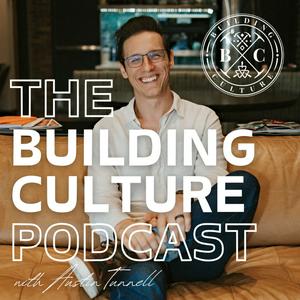
Get the free radio.net app
- Stations and podcasts to bookmark
- Stream via Wi-Fi or Bluetooth
- Supports Carplay & Android Auto
- Many other app features
Get the free radio.net app
- Stations and podcasts to bookmark
- Stream via Wi-Fi or Bluetooth
- Supports Carplay & Android Auto
- Many other app features


The Building Culture Podcast
download the app,
start listening.




